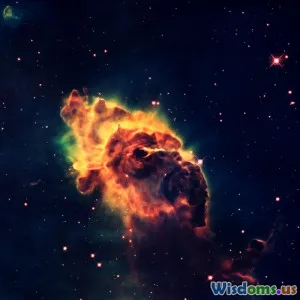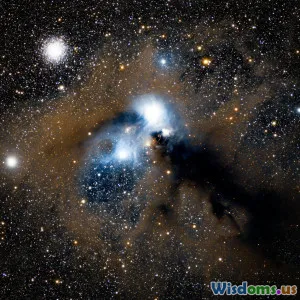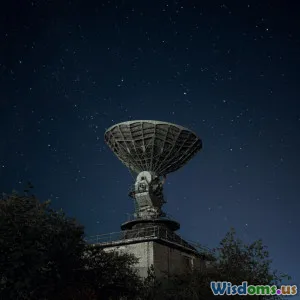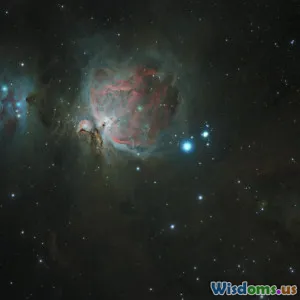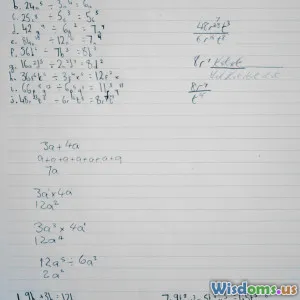
Are Alien Megastructures Really Causing Strange Star Dimming
8 min read Explore the mystery behind strange star dimming and whether alien megastructures could be the cause. (0 Reviews)
Are Alien Megastructures Really Causing Strange Star Dimming?
Introduction
Imagine a star flickering unnaturally, not like the gentle twinkle familiar to astronomers. Instead, it dims erratically by as much as 22%, without clear periodicity or predictable cause. This bizarre cosmic observance has captivated scientists and space enthusiasts alike, sparking intriguing but controversial speculations—from natural astrophysical phenomena to the extraordinary hypothesis of alien megastructures orbiting distant stars.
But are these mysterious dips in brightness truly evidence of extraterrestrial engineering, or do the answers lie in the complex physics of our universe? This article ventures into the depths of this compelling enigma to separate science fiction from science fact.
The Phenomenon of Strange Star Dimming
Case Study: KIC 8462852 (Tabby's Star)
The star that ignited widespread interest in abnormal dimming is KIC 8462852, also known as Tabby’s Star, located about 1,470 light-years away in the constellation Cygnus. Discovered by astronomer Tabetha Boyajian using data from NASA’s Kepler Space Telescope, Tabby's Star exhibits sudden dips in brightness that defy conventional explanations like planetary transits.
Typically, exoplanet transits cause stars to dim predictably and minimally—a fraction of a percent lasting several hours. However, Tabby’s Star dims by up to 22% during irregular intervals, sometimes lasting from a few days to weeks. This erratic behavior prompted a flurry of studies and hypotheses spanning natural and speculative realms.
Other Examples
Following Tabby’s Star, other stars have exhibited weird dimming phenomena, though none as dramatic. Stars such as EPIC 204278916 showed unexplained dimming alongside obvious signs of circumstellar material, while RZ Piscium exhibits dimming related to dust clouds, suggesting varied causes behind luminosity fluctuations.
Alien Megastructures: The Exciting Hypothesis
What Are Alien Megastructures?
The alien megastructure hypothesis draws upon the concept of large-scale constructs orbiting stars, capable of absorbing or scattering starlight. A prominent idea involves Dyson spheres or swarms, theorized by physicist Freeman Dyson in 1960, describing hypothetical megastructures built by advanced civilizations to harvest their star's energy.
If such structures partially eclipse a star, they might explain erratic dips in brightness like those observed. This idea touched the popular imagination partly due to the scale and uniqueness of Tabby’s Star's light curves.
Why the Hypothesis Is Compelling but Questionable
On the one hand, the alien megastructure hypothesis is thrilling and captures human curiosity about extraterrestrial life. However, extraordinary claims require extraordinary evidence. Despite the allure, there is no direct evidence supporting the presence of alien technology around these stars.
Scientific Explanations for Strange Star Dimming
Dust Clouds and Circumstellar Material
The most widely supported explanation is that clouds of dust or debris orbiting the stars cause irregular and significant light dimming. These clouds may be remnants of cometary breakups, asteroid collisions, or discs of exozodiacal dust akin to our solar system’s zodiacal light.
Infrared observations are crucial here. Dust tends to absorb visible light and re-emit it as infrared radiation. Initial infrared studies hinted at excess emissions around Tabby’s Star, but further observations showed no significant infrared excess, complicating the dust explanation but not ruling it out outright—indicating perhaps the dust is colder or more diffuse.
Intrinsic Stellar Variability
Another angle examines whether the dimming comes from the stars themselves. Young stellar objects, for example, show irregular light fluctuations caused by star spots or magnetic activity. But Tabby’s Star isn’t young or magnetically active enough to fully explain its peculiar light curve.
Interstellar Medium and Instrumental Effects
Some scientists explored interstellar clouds between Earth and the star as possible dimming culprits, though generally, these would not cause rapid brightness fluctuations. Additionally, researchers scrutinized whether the Kepler Space Telescope or data processing pipeline introduced artifacts but concluded the dimming signatures are genuine astrophysical phenomena.
Current Research and Future Directions
Multi-Wavelength Observations
Panoramic sky surveys and follow-up telescopic studies continue to monitor these unusual stars across various electromagnetic spectra. This multi-pronged approach helps differentiate between dust, star spots, or other physical causes.
Citizen Science Contributions
Projects like Planet Hunters involved volunteers combing through Kepler data, instrumental in discovering Tabby’s Star’s dimming patterns. Engaging the public has increased vigilance in discovering analogous phenomena.
The Search for Extraterrestrial Intelligence (SETI) Investigations
To test alien explanation hypotheses, SETI researchers have targeted suspicious stars for unusual radio or optical signals. To date, these searches have found no indicators of deliberate extraterrestrial transmissions associated with strange dimming events.
Conclusion: Rare Mysteries, Not Ready to Blame Aliens
The strange dimming of stars like KIC 8462852 represents a compelling window into the complex interplay of astrophysics. While the speculation about alien megastructures captivates imaginations and serves as a cultural touchstone, the scientific community overwhelmingly favors natural explanations grounded in astrophysical phenomena such as dust clouds and intrinsic stellar behavior.
Despite years of observations and studies, these stars hold onto some secrets, prompting continued exploration into stellar environments, circumstellar dynamics, and the behavior of exotic cosmic dust. Rather than jumping to cosmic conclusions, this enigma encourages humility, patience, and methodical inquiry.
Ultimately, the universe is a vast, enigmatic place full of surprises—dim stars might one day reveal signs of life or novel physics, but for now, they remind us to look closer and think deeper about the cosmos around us.
Sources & Further Reading:
- Boyajian et al. (2016), "Planet Hunters X. KIC 8462852: Where's the flux?"
- Wright, J. T., et al. (2016), "The Search for Extraterrestrial Civilizations with Large Energy Supplies"
- NASA Kepler Science Center, Tabby's Star Details
- SETI Institute, Ongoing Research
Author’s Note: For those intrigued by star dimming phenomena, keep an eye on new data releases from upcoming missions such as the James Webb Space Telescope (JWST), which promise unprecedented insights into the environments of these mysterious stars.
Rate the Post
User Reviews
Popular Posts











